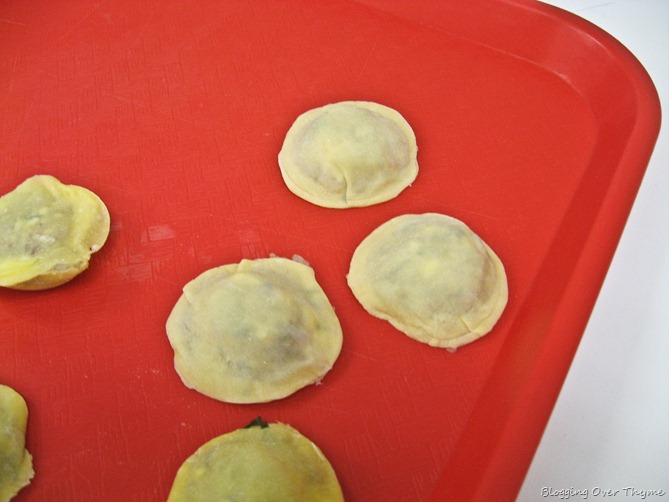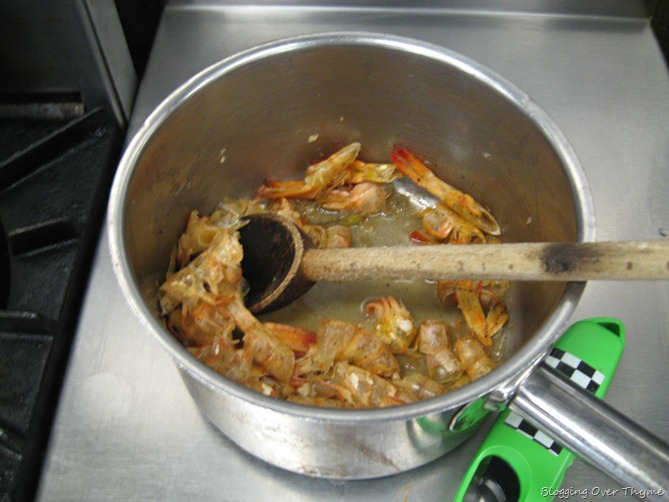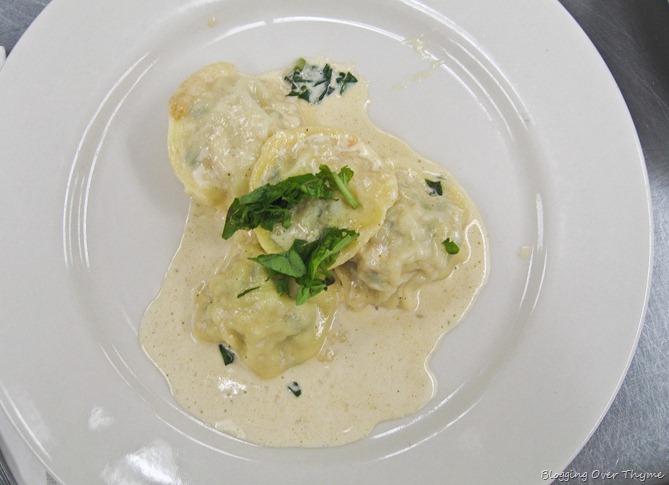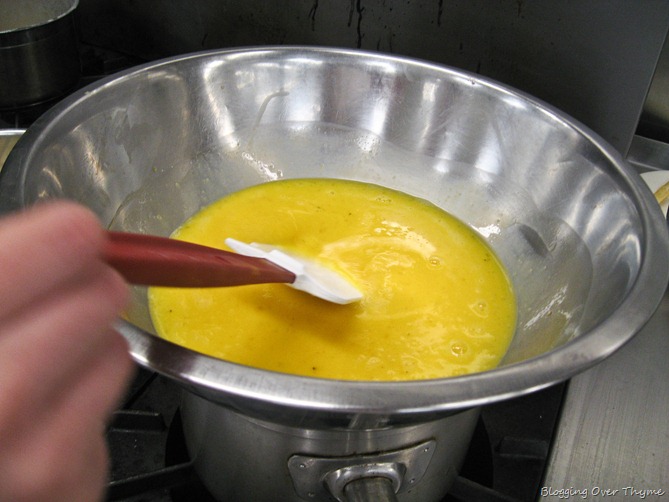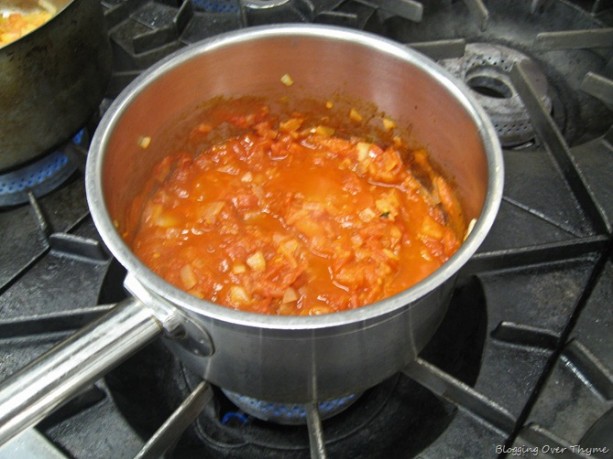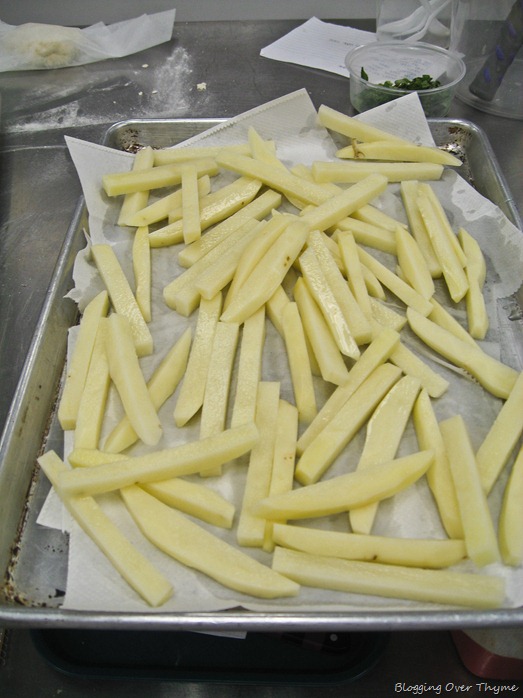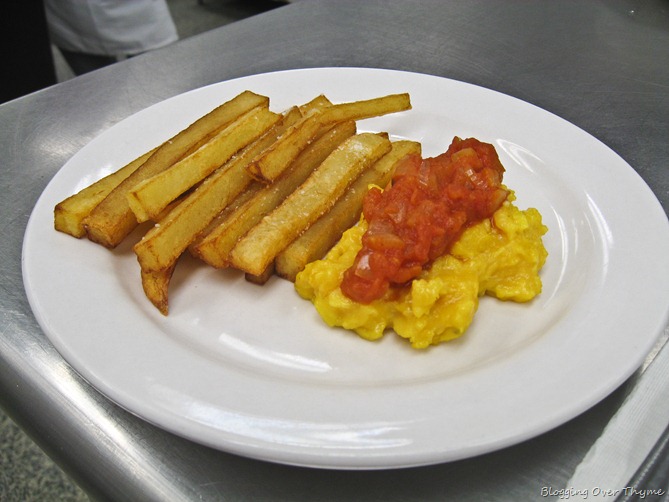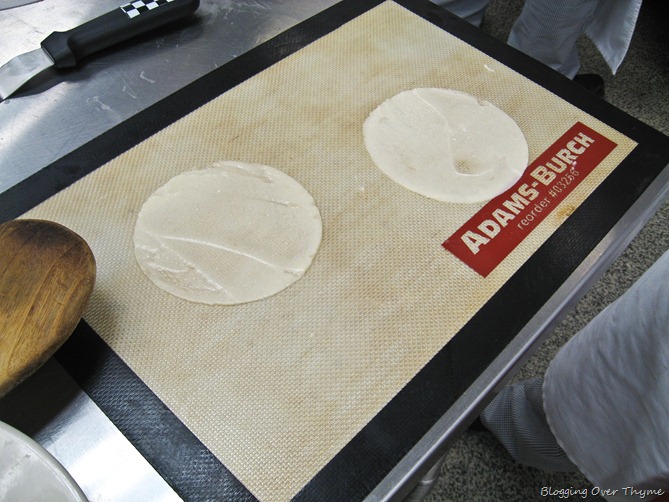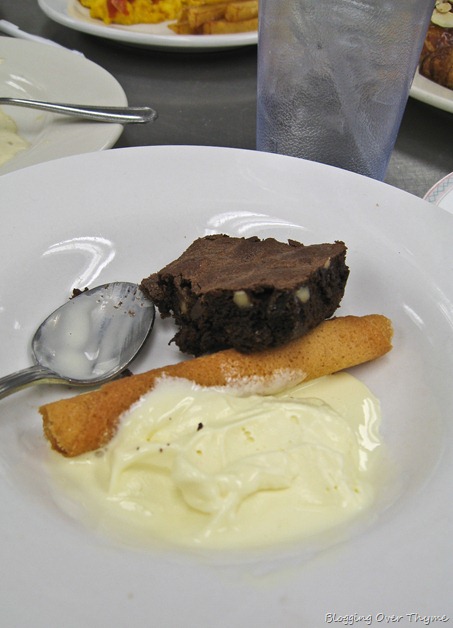Day 21: Homemade Ravioli, Scrambled Eggs & Brownies
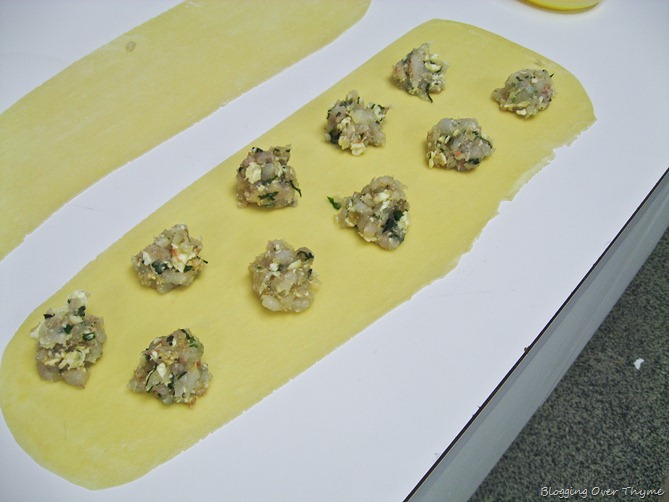
Today was an another exciting, menu-packed day! We made homemade ravioli for the first time, which meant we got to practice making homemade pasta once again. I’ve made ravioli once at home (not incredibly successfully), so I was excited to learn a better method for it. Unfortunately, at home, I used a ravioli mold, which doesn’t give you as much control over the final product. In school, we learned how to make it by hand.
Our filling was very unique—and included finely chopped raw shrimp (that was deveined), chopped basil, shallot, garlic, and a bit of cold butter that was mixed in. We also added in a small amount of Tobasco sauce for a bit of heat. As you can notice from the picture above, the white specks are butter.
Once we rolled out our pasta dough, we staggered the filling on one sheet of pasta, which we brushed lightly with egg yolk. We then carefully lay down the top sheet of pasta directly on top—crimping the filling as we went. We used a small round biscuit cutter to press down and help form, followed by using another larger biscuit cutter to cut and then pinched the edges with our fingers. As Chef Brian told us, good ravioli should be very thin pasta and really be all about the filling.
We served our pasta with a LA SAUCE CRÈME AU BASILIC, which is basically a basil cream sauce that we made by lightly sauteeing the shrimp shells (to add extra flavor), more shallot, garlic, and basil. To this, we added white wine and cooked au sec, which means until dry. Before serving, we added in heavy cream and more chiffonade basil and parmesan cheese.
It was good and our ravioli came out well and very plump—but I tend not to be a huge fan of cream sauces and would have preferred to just have the ravioli with a bit of butter and cheese. This dish could easily be adapted with raw lobster meat, chicken, pork, what have you. I’m excited to make more homemade ravioli in the future!
Despite not really going hand in hand, we also learned how to make scrambled eggs—however, not in the way that you might imagine. It is basically a lesson on how you can really make a protein tender by cooking it over low heat and slowly.—and results in a very creamy, custardy scrambled egg, without adding any other ingredients.
To do this, we whisked together lots of eggs, strained them, and put them in a large stainless steel bowl over a bain marie (water bath with lightly simmering water). Basically the heat of the steam cooks the eggs incredibly slowly—i.e. it took us roughly 40 minutes to cook these—so it is not something you want to throw together at the last minute. It also requires constant stirring with a spatula, so my partner, Lindsay, and I had to switch off between other tasks around the kitchen.
Our scrambled eggs were served with a topping of tomato concasse, which is essentially a tomato sauce made with onions, fresh and canned tomato and not put through a food mill. It is supposed to have texture!
If the cream-laden ravioli and eggs weren’t enough, we also reviewed the technique for making homemade POMMES FRITES (French fries) once again to go along with them.
For our dessert, we made basic brownies, which were accompanied with cigarette cookies (these will be on Exam #4 apparently and require extremely quick action to assemble!) and fresh ice cream, which was made (by Chef Somchet) with our leftover CRÈME ANGLAISE.
Cigarette tuille are made by putting an extremely thin layer of batter in a mold and immediately removing after baking and rolling using a wooden spoon. Except you have to work extremely quickly or they become brittle and will crumble before your eyes!
On a side note, Crème Anglaise makes a wonderfully delicious vanilla ice cream. So rich, but very good. And simple too!
Chef Brian reminded us today that tomorrow officially marks the halfway point in Phase I—how is that even possible?! Time is really flying…
Hopefully DC’s small dusting of snow doesn’t disrupt my early morning commute! Be back soon…

